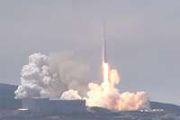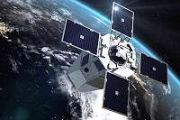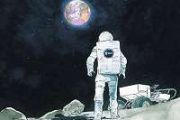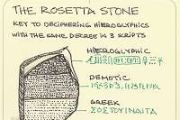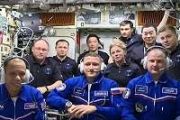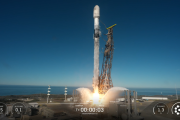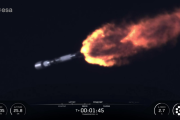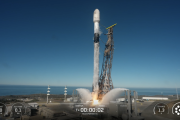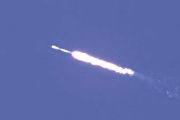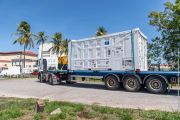
Copernical Team
Sentinel-4 offers first glimpses of air pollutants

The new Copernicus Sentinel-4 mission has delivered its first images, highlighting concentrations of atmospheric nitrogen dioxide, sulphur dioxide and ozone. Despite being preliminary, these images mark a major milestone in Europe’s ability to monitor air quality all the way from geostationary orbit, 36 000 kilometres above Earth.
Coming Soon: ESA Student Internships 2026

Are you ready to take your first step into the space sector? The countdown has begun for the launch of the European Space Agency's 2026 Student Internship Programme, and you could be part of it. Applications open the first week of November.
Space exploration in the backyard, on a budget: How NASA simulates conditions in space without blasting off
This request seems a bit unusual, so we need to confirm that you're human. Please press and hold the button until it turns completely green. Thank you for your cooperation!
Press and hold the button
If you believe this is an error, please contact our support team.
185.132.36.159 : da97626b-7668-4ff8-b306-4927b5fe
A new analysis could map the ancient history of Earth's surface
 Earth's Ediacaran Period, roughly 630 to 540 million years ago, has always been something of a magnetic minefield for scientists.
During earlier and later time periods, tectonic plates kept a steady pace, climate zones were normal, and the planet's magnetic field wobbled modestly around the north and south poles (while occasionally reversing).
But the physics of the Ediacaran don't s
Earth's Ediacaran Period, roughly 630 to 540 million years ago, has always been something of a magnetic minefield for scientists.
During earlier and later time periods, tectonic plates kept a steady pace, climate zones were normal, and the planet's magnetic field wobbled modestly around the north and south poles (while occasionally reversing).
But the physics of the Ediacaran don't s SkyFi Expands ATAK Plugin for Real Time Satellite Imagery Access in the Field
 SkyFi has announced a significant update to its Android Team Awareness Kit (ATAK) plugin, enhancing its ability to deliver high resolution commercial satellite imagery and Earth intelligence data directly to mobile tactical users. The new version introduces improved control over Areas of Interest (AOIs), streamlined imagery management, and robust offline functionality for teams operating in remo
SkyFi has announced a significant update to its Android Team Awareness Kit (ATAK) plugin, enhancing its ability to deliver high resolution commercial satellite imagery and Earth intelligence data directly to mobile tactical users. The new version introduces improved control over Areas of Interest (AOIs), streamlined imagery management, and robust offline functionality for teams operating in remo ICEYE and IHI to Develop Japan's Next Generation Earth Observation Satellite Constellation
 ICEYE, a global leader in Synthetic Aperture Radar (SAR) satellite operations, has signed a procurement agreement with IHI Corporation of Japan to build a large-scale Earth observation satellite constellation serving defense, civil, and commercial applications.
Under the contract, IHI has ordered four satellites and an associated image acquisition system, with an option to purchase up to 2
ICEYE, a global leader in Synthetic Aperture Radar (SAR) satellite operations, has signed a procurement agreement with IHI Corporation of Japan to build a large-scale Earth observation satellite constellation serving defense, civil, and commercial applications.
Under the contract, IHI has ordered four satellites and an associated image acquisition system, with an option to purchase up to 2 Space Force operationally accepts SciTec Forge missile warning ground system
 On September 23, 2025, the U.S. Space Force declared operational acceptance of the second operational delivery of the Future Operationally Resilient Ground Evolution, or FORGE, for the 11th Space Warning Squadron at Buckley Space Force Base. OA #2 integrates FORGE Mission Data Processing with the cyber-secure FORGE Framework to sharpen accuracy, boost performance, and harden resiliency across Mi
On September 23, 2025, the U.S. Space Force declared operational acceptance of the second operational delivery of the Future Operationally Resilient Ground Evolution, or FORGE, for the 11th Space Warning Squadron at Buckley Space Force Base. OA #2 integrates FORGE Mission Data Processing with the cyber-secure FORGE Framework to sharpen accuracy, boost performance, and harden resiliency across Mi Planet secures NGA Luno B contract for AI maritime surveillance
 Planet Labs PBC has announced that its subsidiary, Planet Labs Federal, has received a $12.8 million initial award from the National Geospatial-Intelligence Agency (NGA) under the Luno B indefinite delivery, indefinite quantity (IDIQ) contract. The project, titled Advanced Analytics for Maritime Operations and Reconnaissance (AAMOR), focuses on delivering AI-enabled maritime domain awareness cap
Planet Labs PBC has announced that its subsidiary, Planet Labs Federal, has received a $12.8 million initial award from the National Geospatial-Intelligence Agency (NGA) under the Luno B indefinite delivery, indefinite quantity (IDIQ) contract. The project, titled Advanced Analytics for Maritime Operations and Reconnaissance (AAMOR), focuses on delivering AI-enabled maritime domain awareness cap Miniature chip spectrometer opens new window on the universe
 Chinese scientists have unveiled a groundbreaking miniature spectrometer that combines ultra-high resolution with a wide field of view, enabling faster and sharper exploration of the universe than ever before.
Developed at Tsinghua University's Department of Electrical Engineering, the new technology - known as RAFAEL in English and Yuheng in Chinese - integrates a full spectroscopic syste
Chinese scientists have unveiled a groundbreaking miniature spectrometer that combines ultra-high resolution with a wide field of view, enabling faster and sharper exploration of the universe than ever before.
Developed at Tsinghua University's Department of Electrical Engineering, the new technology - known as RAFAEL in English and Yuheng in Chinese - integrates a full spectroscopic syste China expands space capabilities with new lunar and deep space milestones
 China has recorded a series of landmark achievements in its ongoing quest for space exploration, spanning its crewed space station program, lunar far-side sample return, and interplanetary missions. These milestones underscore the nation's growing capabilities in orbital operations, scientific research, and deep space engineering during the 14th Five-Year Plan period (2021-2025).
The Shenz
China has recorded a series of landmark achievements in its ongoing quest for space exploration, spanning its crewed space station program, lunar far-side sample return, and interplanetary missions. These milestones underscore the nation's growing capabilities in orbital operations, scientific research, and deep space engineering during the 14th Five-Year Plan period (2021-2025).
The Shenz 

